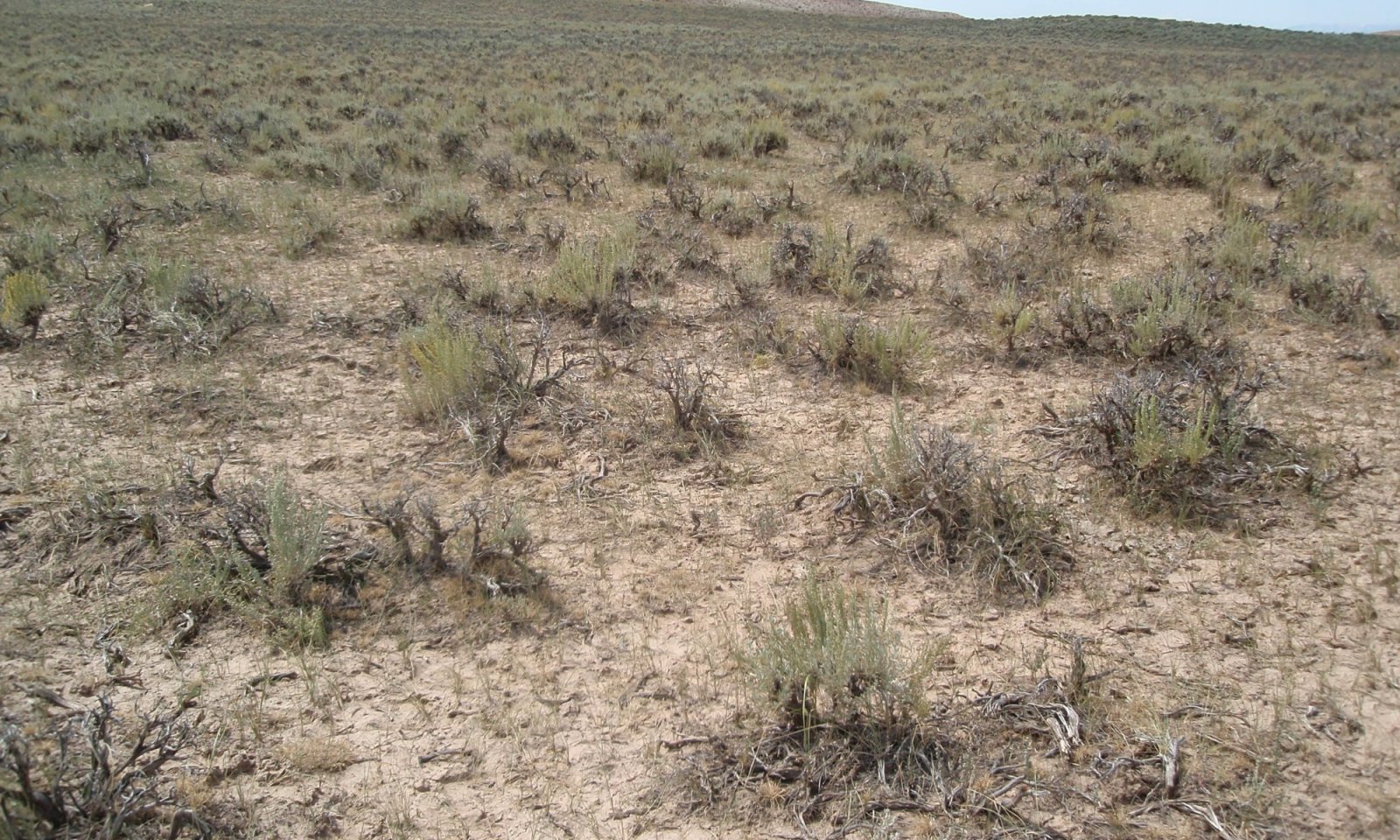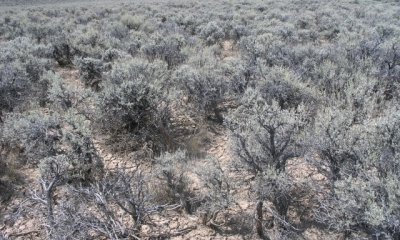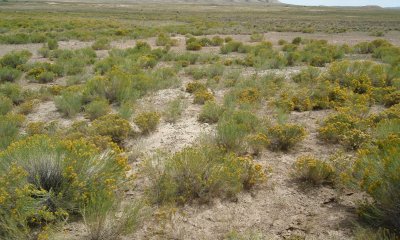
Clayey Pinedale Plateau (Cy PP)
Scenario model
Current ecosystem state
Select a state
Management practices/drivers
Select a transition or restoration pathway
- Transition T1A More details
- Transition T1B More details
- Transition T1C More details
- Transition T1D More details
- Restoration pathway R2A More details
- Transition T2A More details
- Transition T2B More details
- Transition T2C More details
- Transition T3A More details
- Transition T3B More details
-
No transition or restoration pathway between the selected states has been described
Target ecosystem state
Select a state
State 1
Reference State



Description
The Reference State consists of two plant communities: the Wyoming Big Sagebrush/Rhizomatous Wheatgrass Community (1.1), and the Rhizomatous Wheatgrass Community (1.2). Each community differs in percent composition of bunchgrasses, rhizomatous grasses and percent woody canopy cover. Forbs are a minor component on this site. The percentage of woody canopy cover is less than 30 percent.
The dominant shrub species is Wyoming big sagebrush in the Reference State (1).
Two important processes that occur in this state result in plant community changes within the Reference State: sagebrush-killing disturbances (browse, insects, drought, flood) and time without those disturbances. These processes generally are referred to as “natural succession.”
The shift from the Rhizomatous Wheatgrass Plant Community (1.2) to the Wyoming Big Sagebrush/Rhizomatous Wheatgrass Plant Community (1.1) is dependent upon an increase of woody cover. Without sagebrush-killing disturbance, shrubs will increase on this ecological site even with proper grazing management. Improper grazing management may accelerate the rate of increase for woody species.
The shift from the Wyoming Big Sagebrush/Rhizomatous Wheatgrass or Rhizomatous Wheatgrass Plant Communities is dependent upon sagebrush-killing disturbances such as drought, flood, browse, and insects. Management actions can and are often used to mimic these processes through mechanical and chemical treatments. Prescribed fire is not often used on this site due to current land uses and lack of fuels and adequate burn windows (Clause and Randall, 2014).
Submodel
Submodel
Submodel
Submodel
Mechanism
The driver for transition T1A from State 1 (Reference State) to State 2 (Bare Ground) is low to high intensity, long duration, and high frequency herbivory events.
Mechanism
The driver for transition T1B from State 1 (Reference State) to State 3 (Disturbed) is an increase in soil-disturbing activity such as hoof action, anthropogenic activity, rodent activity, or occasional flooding.
Mechanism
All states will transition to State 4 (Highly Disturbed) when severe soil disturbance occurs (removal of topsoil).
Mechanism
All states will transition to State 5 (Pasture) if landuse converted to pasture. Pasture is defined as land composed of introduced or domesticated native forage species that is used primarily for the production of livestock. Pastures receive periodic renovation and cultural treatments, such as tillage, fertilization, mowing, weed control, and may be irrigated. Pastures are not in rotation with crops.
Mechanism
Restoration is possible with sagebrush treatment. Mowing may be the best tool to increase residual and litter in smaller size classes to mulch the site for moisture retention. However, other mechanical tools such as a harrow or aerator should be considered if there is soil crusting and range seeding will be implemented. Chemical treatment could be considered, especially if rabbitbrush densities are higher than desired, but 2,4-DLVE is recommended over tebuthiuron. Tebuthiuron is not recommended due to the high clay content in these soils. Contact the University of Wyoming Extension Service or local Weed & Pest District for appropriate rates and timing. Temporary rest or deferment from grazing is needed to allow an herbaceous response which may take two to several years. If an herbaceous response does not occur or accelerated restoration is desired, a range seeding may be required.
Mechanism
The driver for transition T2A from State 2 (Bare Ground) to State 3 (Disturbed) is an increase in soil-disturbing activity such as hoof action, anthropogenic activity, rodent activity, or occasional flooding.
Mechanism
All states will transition to State 4 (Highly Disturbed) when severe soil disturbance occurs (removal of topsoil).
Mechanism
All states will transition to State 5 (Pasture) if landuse converted to pasture. Pastures receive periodic renovation and cultural treatments, such as tillage, fertilization, mowing, weed control, and may be irrigated. Pastures are not in rotation with crops.
Mechanism
All states will transition to State 4 (Highly Disturbed) when severe soil disturbance occurs (removal of topsoil).
Mechanism
All states will transition to State 5 (Pasture) if land use converted to pasture. Pasture definition - land composed of introduced or domesticated native forage species that is used primarily for the production of livestock. Pastures receive periodic renovation and cultural treatments, such as tillage, fertilization, mowing, weed control, and may be irrigated. Pastures are not in rotation with crops.
Model keys
Briefcase
Add ecological sites and Major Land Resource Areas to your briefcase by clicking on the briefcase (![]() ) icon wherever it occurs. Drag and drop items to reorder. Cookies are used to store briefcase items between browsing sessions. Because of this, the number of items that can be added to your briefcase is limited, and briefcase items added on one device and browser cannot be accessed from another device or browser. Users who do not wish to place cookies on their devices should not use the briefcase tool. Briefcase cookies serve no other purpose than described here and are deleted whenever browsing history is cleared.
) icon wherever it occurs. Drag and drop items to reorder. Cookies are used to store briefcase items between browsing sessions. Because of this, the number of items that can be added to your briefcase is limited, and briefcase items added on one device and browser cannot be accessed from another device or browser. Users who do not wish to place cookies on their devices should not use the briefcase tool. Briefcase cookies serve no other purpose than described here and are deleted whenever browsing history is cleared.
Ecological sites
Major Land Resource Areas
The Ecosystem Dynamics Interpretive Tool is an information system framework developed by the USDA-ARS Jornada Experimental Range, USDA Natural Resources Conservation Service, and New Mexico State University.




